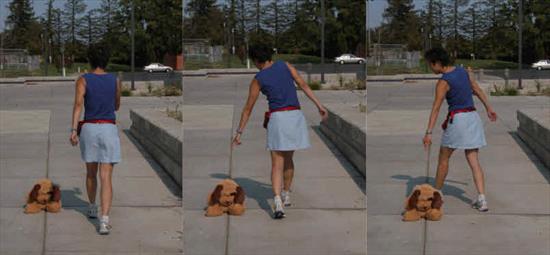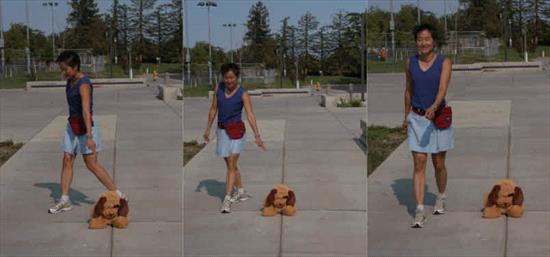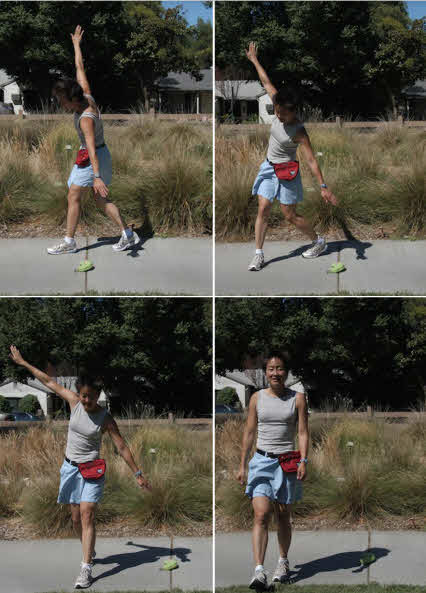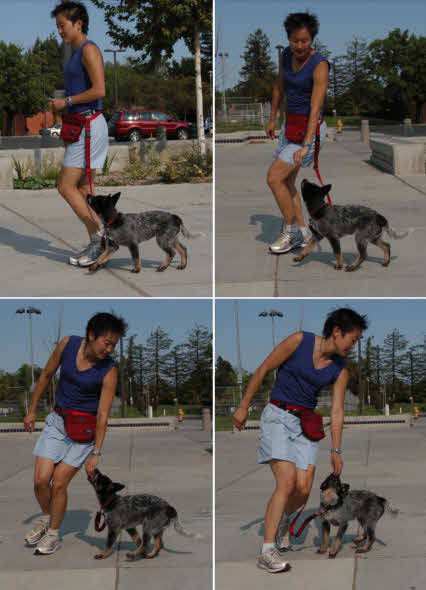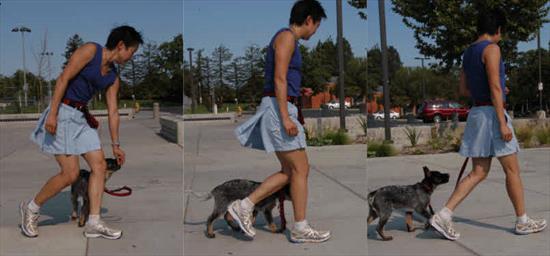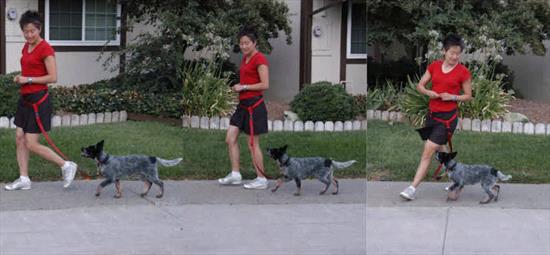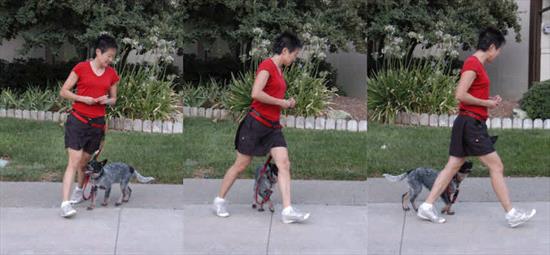From the last 2 blogs on loose leash walking, you’ll recall that teaching dogs to walk on loose leash is all about:
- Rewarding Fido with treats at first (bits of Fido’s meal) for heeling next to you and also rewarding Fido by walking quickly enough (at least 120 bpm using a metronome or 2 steps a second) to make the walk engaging.
- Stopping as soon as Fido’s front paws get ahead of your feet so that you’re stationary by the time he gets to the end of the leash.
- Then increasing the length of time your dog must heel at attention in order to earn rewards until walking nicely becomes a habit and treats are no longer needed.
In addition to these three points, I also introduced an about turn, which serves a couple of functions. The about turn can be used when the dog gets ahead of you. The goal is for Fido to learn that every time he gets ahead of you, you just turn and walk the other direction. It can also be used just to spice up the walk so it’s more of a game where you intermittently switch direction and he gets rewarded for mirroring your changes.
Another technique everyone should know, which has a similar function to the about-turn, is the U-turn where, when you make the turn, your dog is stationary and you walk around him. That means if your dog walks on your left side, you turn to the left and walk around him.
Practice the U-turn without the dog first.
Start by walking at a power walk pace (at least 2 steps per second). When you get to the point where you want to make a turn,
think about placing a stick in the ground with your left hand and then walking around the stick.
Once you are facing the direction you just came from, you can let go of the imaginary stick and head back in the direction in which you came.
Notice that, unlike the about-turn, where you walk up and down the same line, with the U-turn you walk up one line and
come back down a parallel line that’s on the other side of the dog. Make sure that, in both cases, you are walking a straight line.
If you’re having problems getting the hang of the turn, try it this way, as shown in the photos below.
When you get to the point where you want to make the turn around the toy shown in the photo above
(which represents the dog), extend your arms like you’re playing airplane.
Continue walking around the toy and head back the direction in which you came.
Now try the same thing with your dog.
In this case, instead of holding an imaginary stick in your left hand, you’ll hold a treat out in your left hand at your dog’s
nose level and then walk around that treat. This treat will serve to cause your dog to stop her forward motion.
Then you can walk right around her, making sure to hold the treat in a way that causes her head to turn in the new direction.
Note that my left arm is bent 90 degrees and straightens only when I start to lure the dog.
Once you’re heading the way you came and the dog’s head is turned in the new direction, give her the treat while you continue walking.
Notice that after I give her the treat my left arm goes back to its 90 degree bent position so it’s clear to this novice dog when I am and am not giving her a treat or luring her.
Once your dog gets the idea you can do this turn without a treat.
Note that in this case, I start my U-turn when I’m a little ahead of Lucy. If I’m level with her and try to do this, I’ll crash into her. So I must be a little bit ahead.
When I turn, I end up blocking her path so she turns on the inside with me.
Now with this U- turn, you have a way to preemptively keep your dog from getting ahead of you and you’ll be able to cut down on the treat rate you need to keep your dog heeling next to you.
Randomly add the U-turn, and about–turns too, so that your dog gets used to the idea that she won’t have a chance to rush ahead and also just to spice up the walk.


